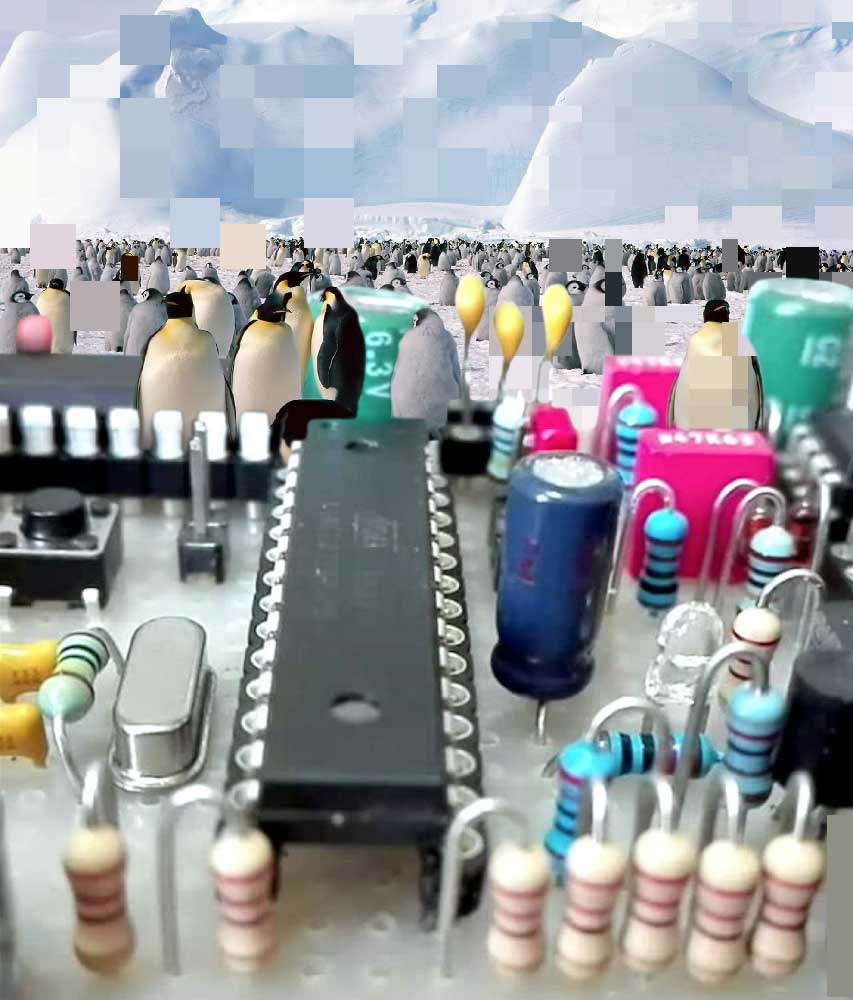Printed circuit bird, 2021. I created this work of electronic art to demonstrate the principles by which consciousness originates. The bird's circuitry is entirely analog electronic, which means that her song is not recorded but *generated* by adjustable vibrations in the circuit that forms her body. She is designed to vibrate when exposed to electricity, and we hear the resulting (audible) waveforms as a bird-like sound. Her circuit contains five analog electronic oscillators that are coupled together with a combination of resistors and capacitors. The vibrations of one oscillator affect the others, thus causing a degree of complexity and unpredictability that we wouldn't expect from such a simple circuit. It would be difficult to model this analog system because there are so many possible states, as I will attempt to explain below.
In the video, you see me adjusting variable resistors that affect the frequency, amplitude, and symmetry of the oscillations. The resulting changes in vibration are heard as tonal variation and patterns of sound, or "syntax" of the bird's song. In other words, we can hear the frequency, amplitude, and temporal structure of the waveform as it changes within the bird's circuit. Residual capacitance adds to the unpredictable nature of cause and effect. It is not only which knob I turn or how much, but *when* I make the adjustment relative to the state of the entire connected circuit. These are the continuous, interconnected, analog principles from which life-like behaviors arise. The late roboticist and neuroscientist William Grey Walter experimented with similar principles, notably demonstrated by his tortoise robots.
She is like us — we are electrical beings, too. The neural activity of a human brain is an aggregate of billions of oscillating neurons affecting each other to form thoughts and feelings. While each individual neuron is very simple, the complexity of the neural system is unfathomable. As Nikola Tesla said, "If you want to find the secrets of the universe, think in terms of energy, frequency and vibration." These physical laws are the basis of mind and our conscious universe.







